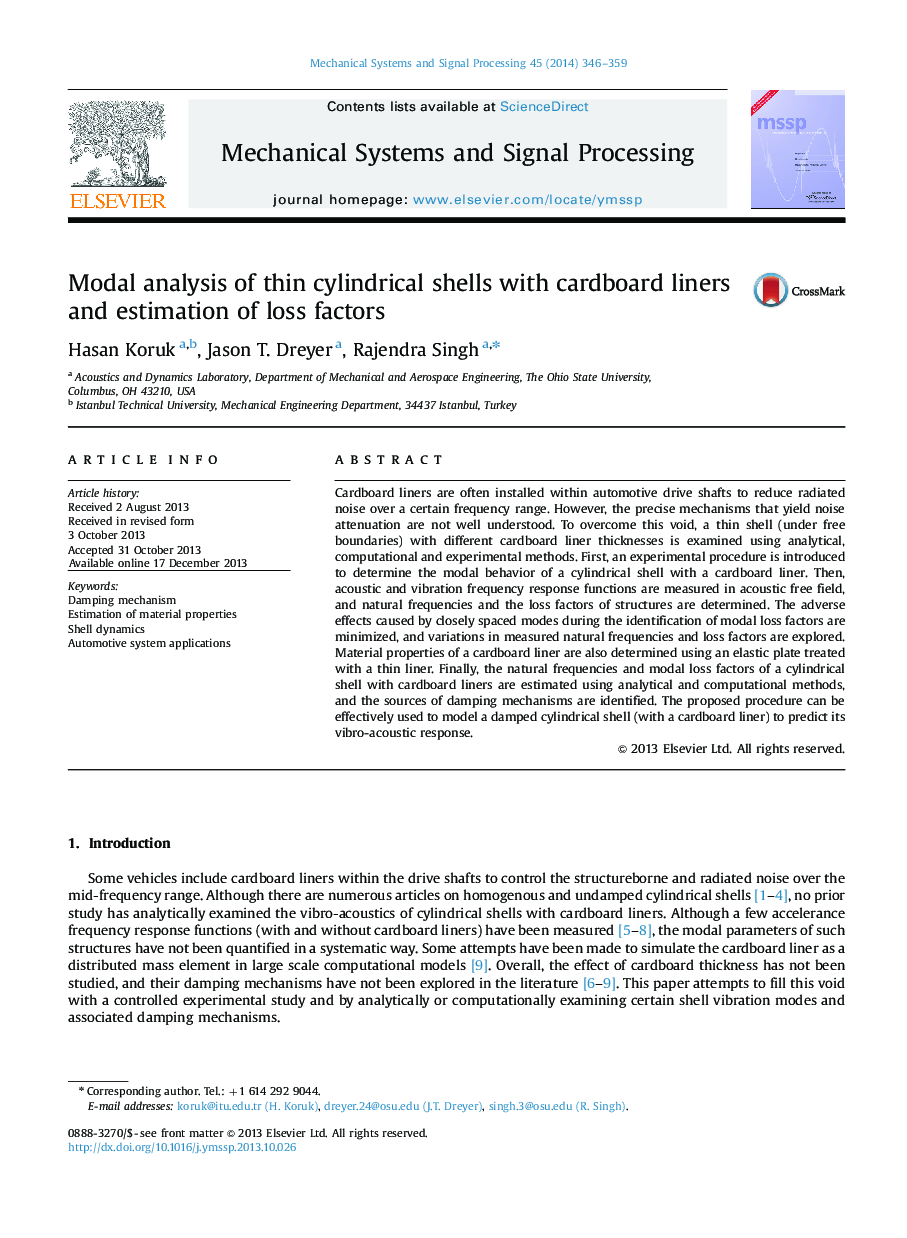| Article ID | Journal | Published Year | Pages | File Type |
|---|---|---|---|---|
| 560492 | Mechanical Systems and Signal Processing | 2014 | 14 Pages |
•A thin shell (under free boundaries) with different cardboard liner thicknesses is examined.•Experimental procedure is introduced to determine the modal behavior of a cylindrical shell with a cardboard liner.•Material properties of a cardboard liner are also determined.•The procedure can be effectively used to model a damped cylindrical shell (with a cardboard liner) to predict its vibro-acoustic response.
Cardboard liners are often installed within automotive drive shafts to reduce radiated noise over a certain frequency range. However, the precise mechanisms that yield noise attenuation are not well understood. To overcome this void, a thin shell (under free boundaries) with different cardboard liner thicknesses is examined using analytical, computational and experimental methods. First, an experimental procedure is introduced to determine the modal behavior of a cylindrical shell with a cardboard liner. Then, acoustic and vibration frequency response functions are measured in acoustic free field, and natural frequencies and the loss factors of structures are determined. The adverse effects caused by closely spaced modes during the identification of modal loss factors are minimized, and variations in measured natural frequencies and loss factors are explored. Material properties of a cardboard liner are also determined using an elastic plate treated with a thin liner. Finally, the natural frequencies and modal loss factors of a cylindrical shell with cardboard liners are estimated using analytical and computational methods, and the sources of damping mechanisms are identified. The proposed procedure can be effectively used to model a damped cylindrical shell (with a cardboard liner) to predict its vibro-acoustic response.
